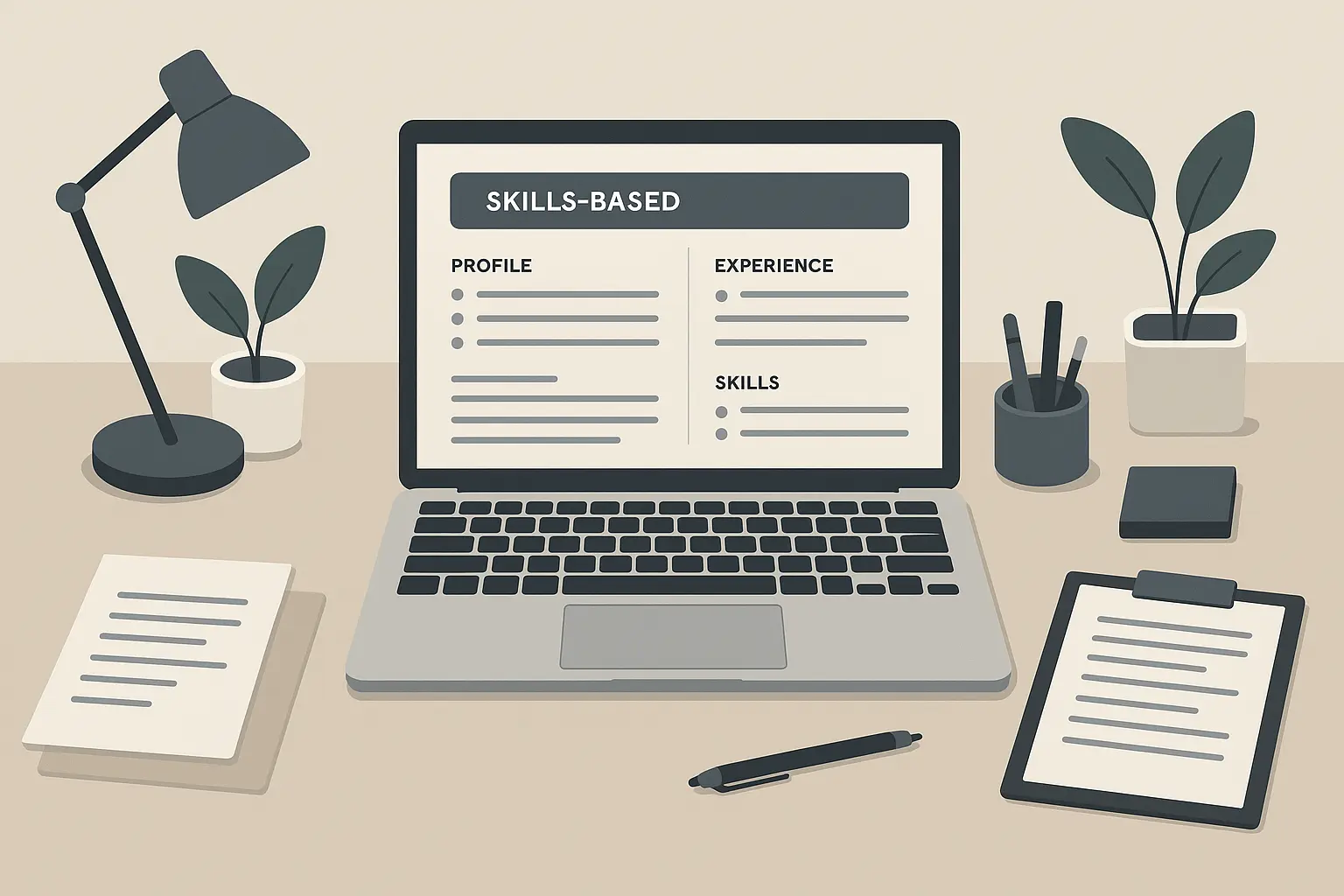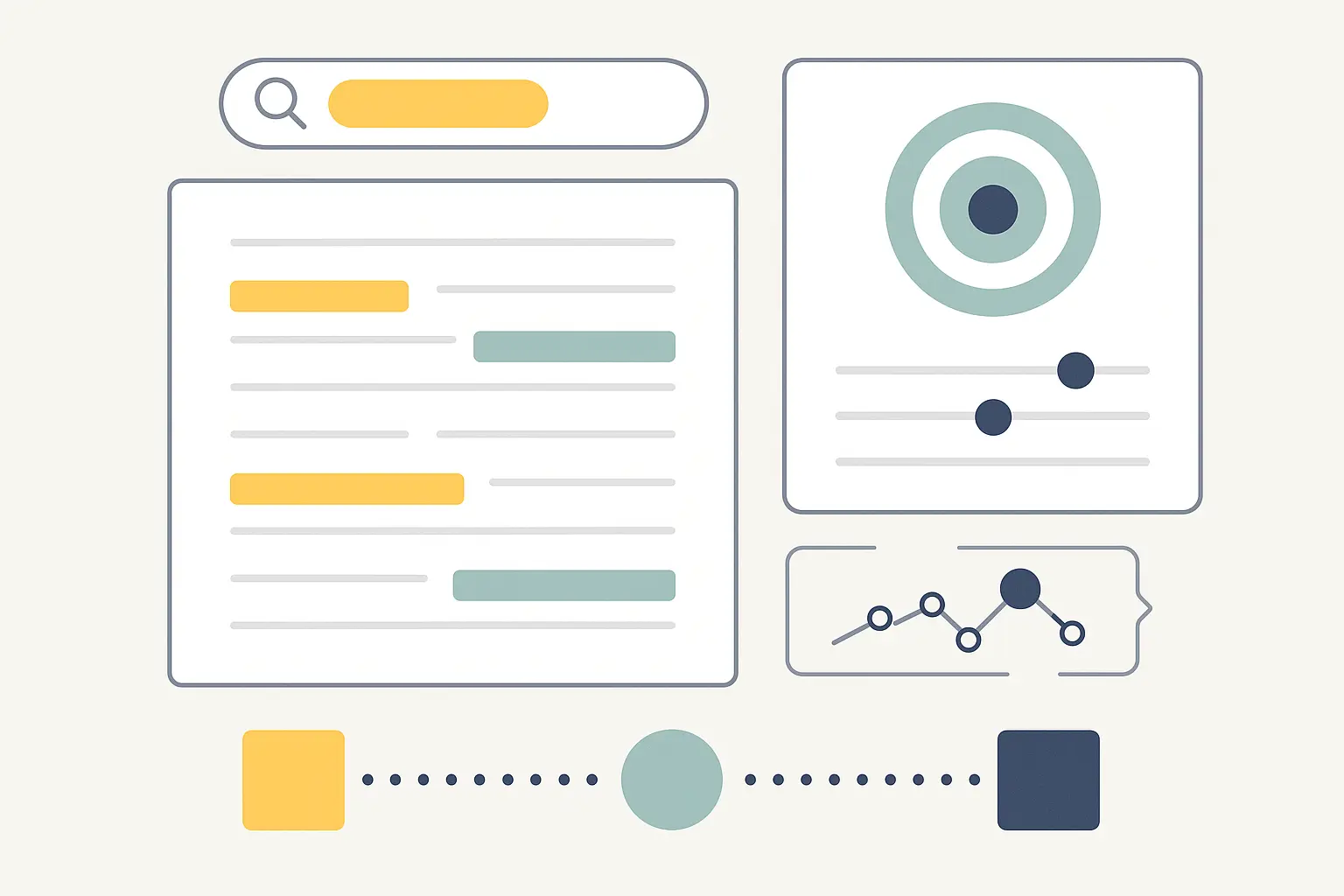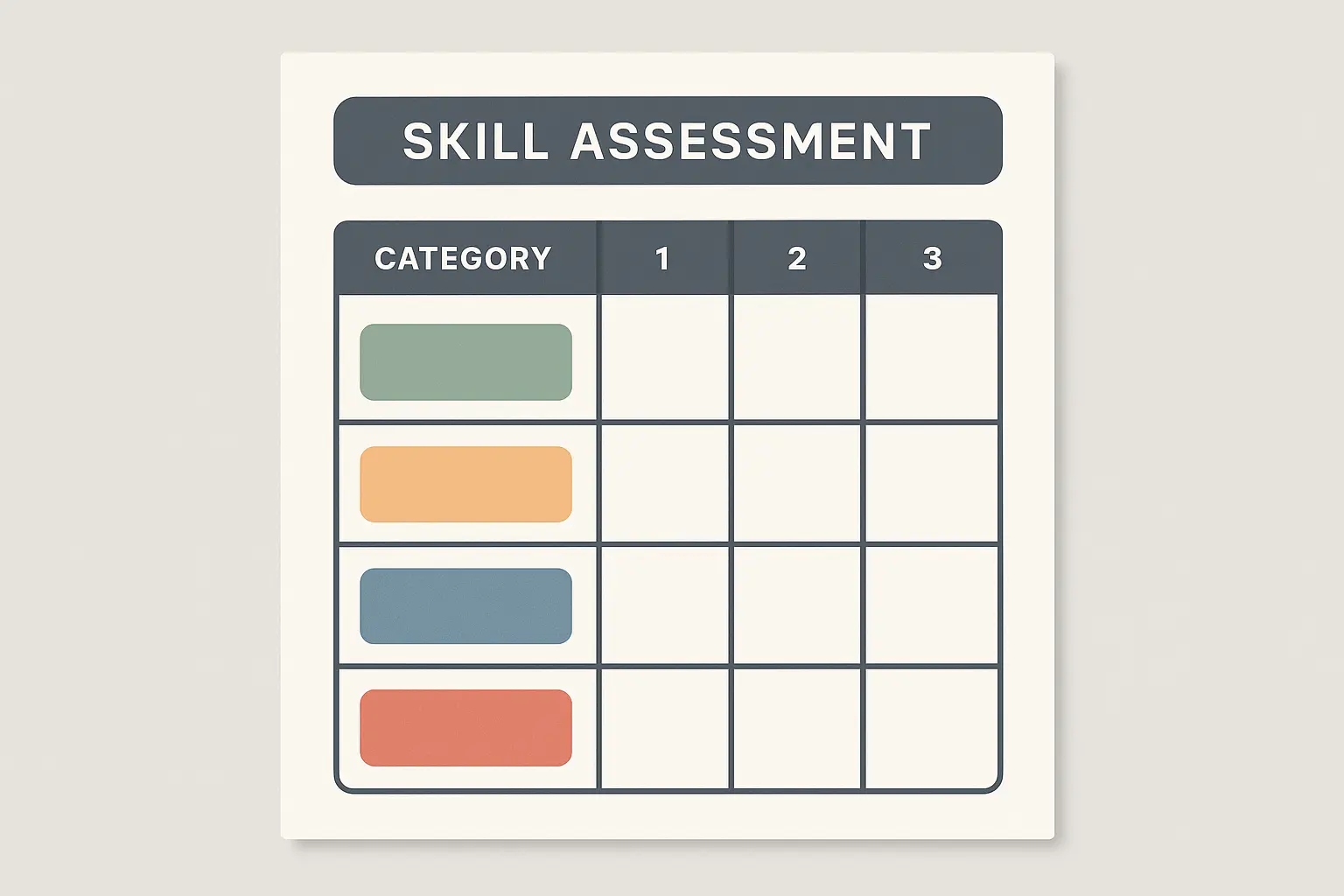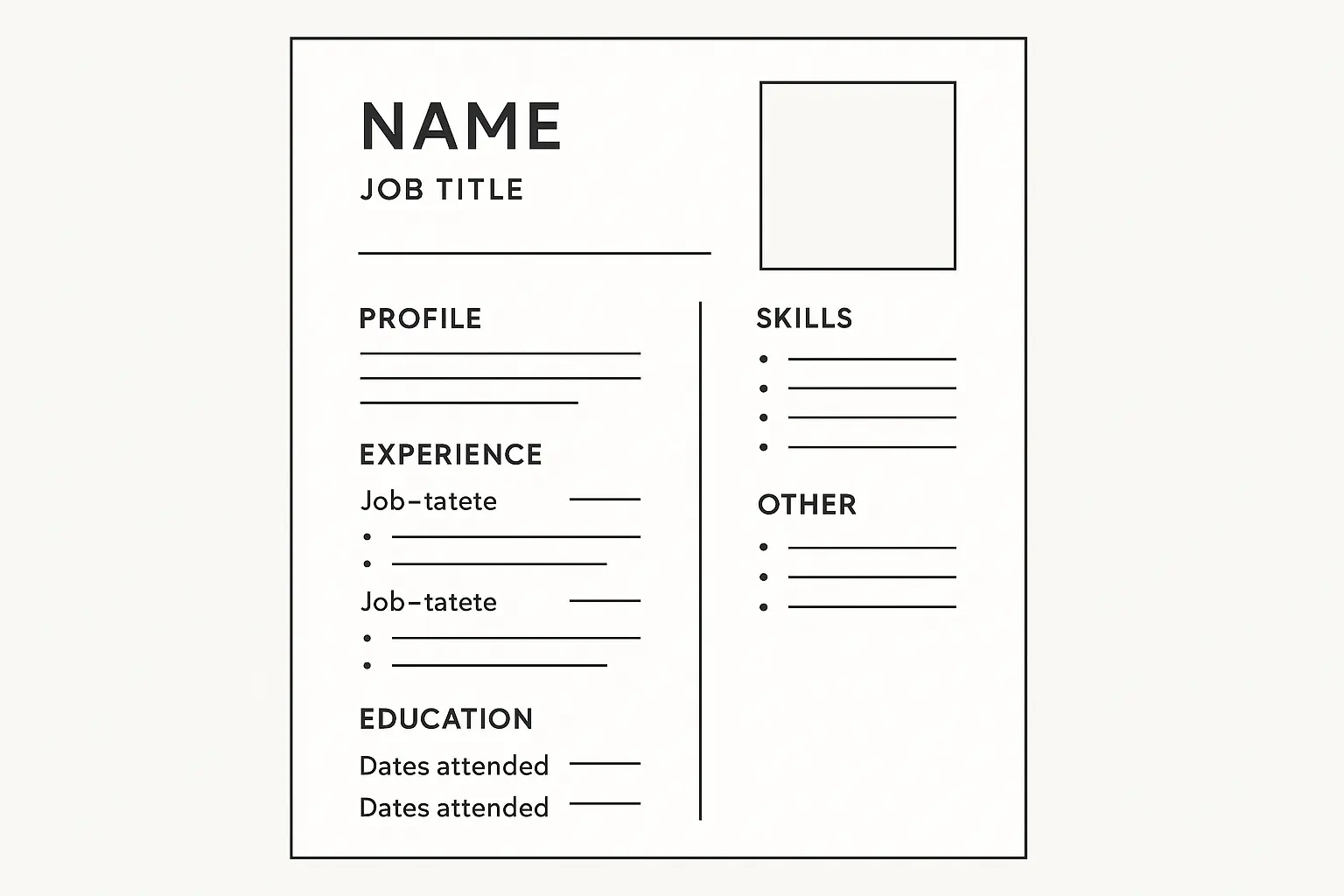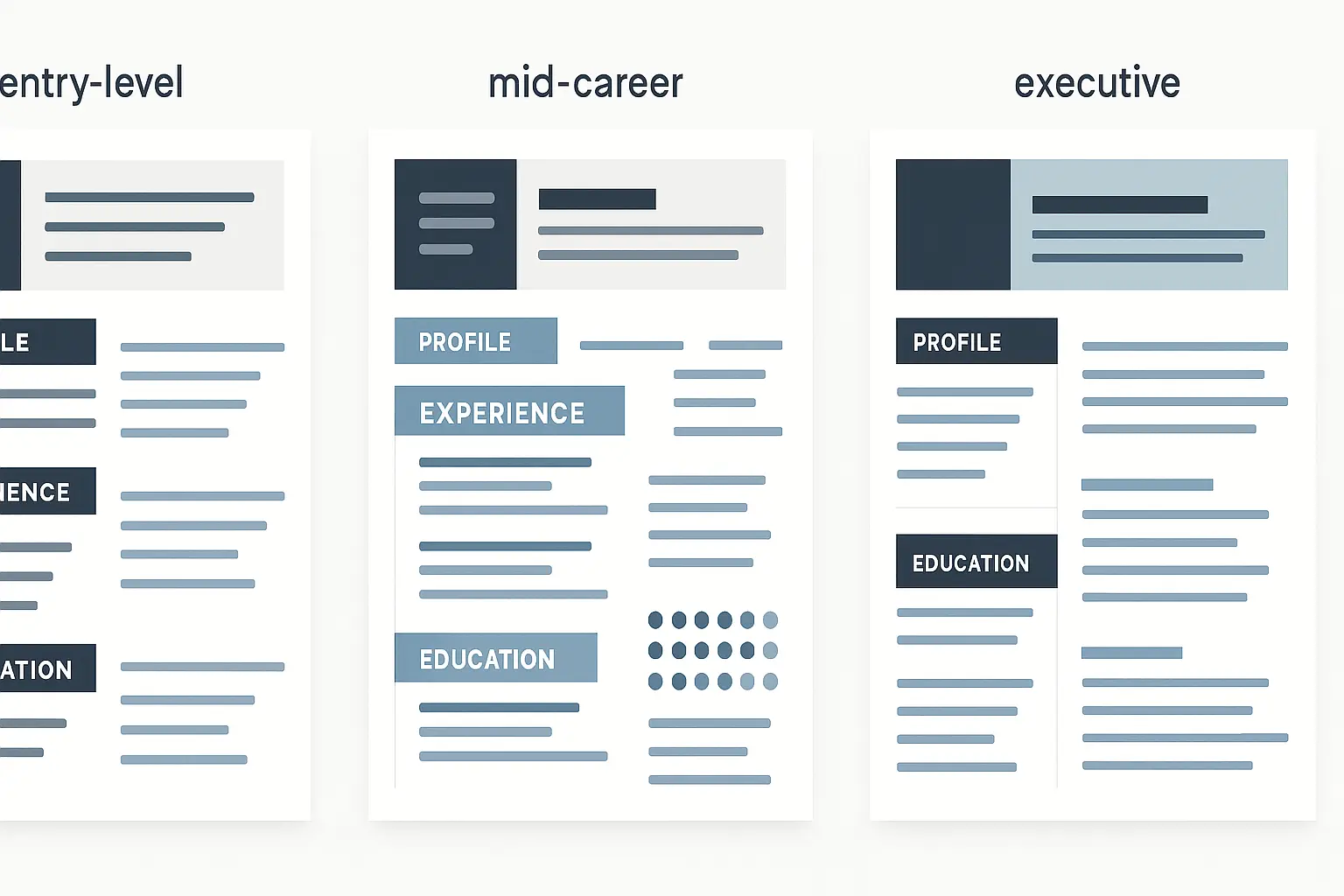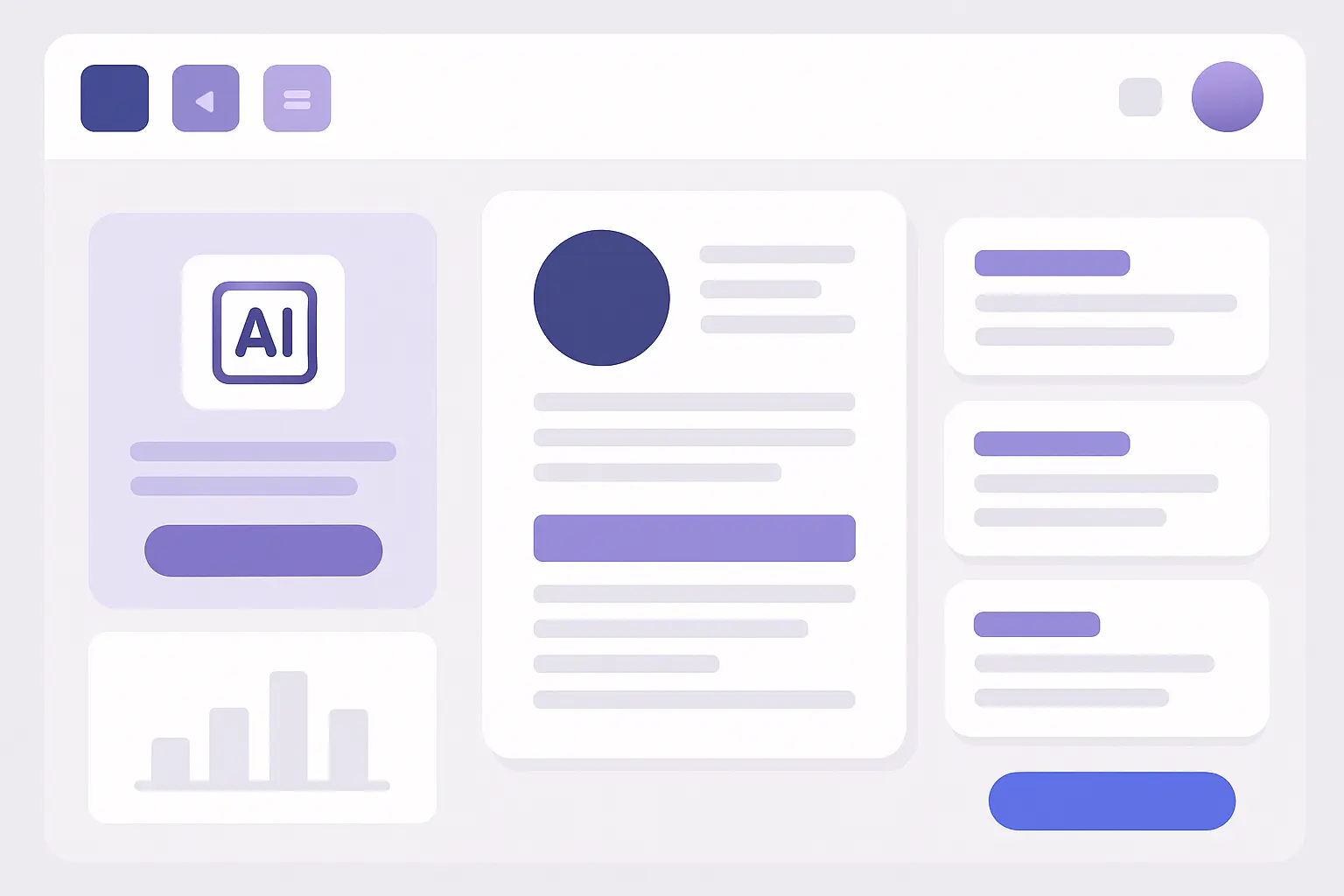Your Resume Isn’t Telling Your Whole Story (And Here’s How to Fix It)

Let me be straight with you: I’ve watched countless talented professionals get passed over because their resumes buried their best qualities under a pile of job titles and dates. Your chronological resume might be killing your chances before you even get started.
Here’s the thing – hiring managers don’t really care that you worked at Company X from 2019-2021. They want to know: Can you solve our problems?
That’s where skills based resume templates come in. Instead of making recruiters play detective with your work history, you put your superpowers front and center. And it’s working – according to Resume Templates, over 40 million professionals annually use skills-based resumes to emphasize relevant skills rather than detailed work history, making this format particularly effective for career changers and professionals with employment gaps.
Table of Contents
-
When Skills-Based Templates Actually Work (And When They Don’t)
-
Building Your Skills Arsenal the Right Way
-
Making Your Numbers Talk Like a Pro
-
The ATS Reality Check Nobody Talks About
-
Your Step-by-Step Action Plan
-
Template Selection That Actually Matters
-
How Resume Builder IQ Makes This Actually Easy
-
Your Next Move
TL;DR
-
Skills based resume templates prioritize your capabilities over work timeline, perfect for career changers and those with employment gaps
-
Organize skills into 4-6 logical categories with quantified achievements rather than basic listings
-
Balance ATS optimization with visual appeal using clean formatting and strategic keyword placement
-
Customize templates based on industry expectations and career stage requirements
-
AI-powered tools can streamline content development and ensure professional language consistency
-
Multiple format versions (PDF vs. text) serve different application scenarios effectively
When Skills-Based Templates Actually Work (And When They Don’t)
Look, skills based resume templates aren’t magic. But they’re perfect if you’re:
-
Switching careers (your retail management skills absolutely transfer to corporate leadership)
-
Fresh out of college (your internship project that saved the company $50K? That counts)
-
Returning to work after time off (your skills didn’t disappear, they just need reframing)
-
Stuck in a job that doesn’t reflect your true capabilities
The shift is simple: Instead of “Here’s where I worked,” you’re saying “Here’s what I can do for you.”
This approach represents a strategic departure from traditional chronological formats. We’re talking about emphasizing what you can do rather than when you did it. This proves particularly valuable for professionals navigating career transitions, recent graduates entering the workforce, and anyone with employment gaps who need to showcase transferable skills and competencies as their primary value proposition.
Why This Works When Traditional Resumes Don’t
Moving away from chronological presentation allows you to control the narrative around your professional capabilities. Instead of forcing recruiters to piece together your qualifications from a work history timeline, you present your most relevant skills upfront. This makes it easier for hiring managers to quickly assess your fit for their specific needs.
Career changers benefit enormously from this approach because it highlights transferable skills that might otherwise get buried in job descriptions from different industries. Recent graduates can showcase academic projects, internships, and volunteer experiences as legitimate proof of their capabilities. Professionals returning to work after extended breaks can emphasize their skills without drawing immediate attention to employment gaps.
The growing emphasis on skills-based hiring is reflected in current data modeling trends, where “organizations everywhere rely on highly skilled data modelers to translate complex business requirements into robust and scalable data frameworks” according to Dice. This highlights how employers prioritize capabilities over traditional career paths.
This strategic approach aligns with understanding functional resume template secrets that help professionals showcase competencies over chronological work history effectively.
Core Components That Actually Matter
Your skills based resume template needs specific structural elements that work together. The foundation includes a strategic professional header, compelling summary statement, and prominently featured skills section that serves as the document’s centerpiece, supported by streamlined work experience that validates rather than dominates your presentation.
Your professional header needs more than basic contact information. Include your LinkedIn profile and relevant professional website or portfolio links. The professional summary becomes critical in this format because it’s your elevator pitch – those 3-4 lines that immediately communicate your value proposition and career focus.
The skills section isn’t just a laundry list of capabilities. Organize competencies into logical categories such as technical skills, leadership abilities, communication expertise, and industry-specific knowledge. Each category should contain 4-6 relevant skills with brief examples or metrics when possible.
Work experience still matters, but it plays a supporting role. Present employment history in a condensed format that includes company names, job titles, and dates, but focuses on accomplishments that reinforce your highlighted skills rather than detailed job descriptions.
Building Your Skills Arsenal the Right Way
Forget the laundry list approach. Smart skills organization looks like this:
Technical Skills: The hard stuff – software, certifications, tools
Leadership: Team management, project coordination, strategic thinking
Communication: Writing, presenting, negotiating (yes, these matter everywhere)
Industry Expertise: The specialized knowledge that makes you valuable
But here’s where most people mess up: they just list skills without proof.
Don’t write: “Project management skills”
Write this: “Led 8-person teams to deliver projects 15% ahead of schedule, saving $200K in overtime costs”
See the difference? One is a claim, the other is evidence.
Skills Categories That Make Hiring Managers Pay Attention
Strategic skills organization goes beyond random groupings to create logical categories that align with how employers think about job requirements. Technical skills, leadership capabilities, communication competencies, and industry-specific expertise form the backbone of most effective skills based resume templates, with each category containing 4-6 carefully selected skills that demonstrate breadth without overwhelming readers.
Technical skills deserve their own category, especially in today’s digital workplace. Include software proficiencies, programming languages, certifications, and specialized tools relevant to your target roles. Don’t just list them – indicate proficiency levels when appropriate (advanced, intermediate, certified).
Leadership and management skills encompass team leadership, project management, strategic planning, and decision-making capabilities. These skills transfer across industries and demonstrate your potential for growth and increased responsibility.
Communication skills include written communication, public speaking, multilingual abilities, and interpersonal skills. These competencies are universally valued and can set you apart from technically qualified candidates who lack strong communication abilities.
Industry-specific expertise shows your deep knowledge of particular sectors, regulations, methodologies, or specialized processes. This category helps establish credibility within your target field while demonstrating specialized value.
When organizing these skills categories, consider how balancing hard and soft skills creates a comprehensive professional profile that appeals to diverse hiring managers.
|
Skills Category |
Key Components |
Industry Examples |
|---|---|---|
|
Technical Skills |
Software, Programming, Certifications |
SQL, Python, Adobe Creative Suite, AWS |
|
Leadership Skills |
Team Management, Project Coordination |
Agile Leadership, Cross-functional Teams |
|
Communication |
Written, Verbal, Presentation |
Public Speaking, Technical Writing |
|
Industry Expertise |
Sector Knowledge, Regulations |
HIPAA Compliance, Financial Modeling |
Transforming Basic Skills into Achievement Statements
The difference between effective and mediocre skills based resume templates lies in how you present your capabilities. Instead of simple skill listings, you need achievement-focused statements that demonstrate impact and provide concrete evidence of your abilities in action, using metrics and specific examples whenever possible.
Replace “project management” with “Led cross-functional teams of 8+ members to deliver projects 15% ahead of schedule.” Transform “customer service” into “Increased customer satisfaction scores by 23% through improved communication protocols.”
Quantified results provide credibility and help hiring managers understand the scope of your experience. Even if you don’t have exact numbers, you can use ranges, percentages of improvement, or comparative statements that give context to your achievements.
Action verbs matter more in skills-based formats because they’re doing heavy lifting to convey impact. Use strong verbs such as “spearheaded,” “optimized,” “streamlined,” “implemented,” and “transformed” to begin your achievement statements.
Before: “Customer service skills”
After: “Customer Relations Excellence: Maintained 97% customer satisfaction rating while managing 50+ daily client interactions, resulting in 15% increase in customer retention and $200K additional revenue”
Making Your Numbers Talk Like a Pro
Every skill needs a story, and every story needs numbers. Even if you don’t have exact figures, you can say:
-
“Increased efficiency by approximately 30%”
-
“Managed teams of 5-15 people”
-
“Reduced errors by more than half”
Context matters too. Saving $10K at a startup hits different than at a Fortune 500 company – and both are impressive for different reasons.
The Art of Quantifying Your Impact
Numbers tell stories that words alone cannot convey, making quantification essential for credible skills based resume templates. Whether you’re describing cost savings, efficiency improvements, team leadership, or customer satisfaction gains, specific metrics provide concrete evidence of your capabilities while helping hiring managers understand the scope and significance of your contributions.
Start by identifying measurable outcomes from your professional experiences. Revenue increases, cost reductions, time savings, quality improvements, and team performance metrics all provide quantifiable evidence of your skills in action.
When exact numbers aren’t available, use ranges or percentages that accurately represent your impact. “Reduced processing time by approximately 30%” is more credible than vague statements about “improving efficiency.”
Consider different types of metrics beyond financial ones. Customer satisfaction scores, employee retention rates, project completion times, error reduction percentages, and training completion rates all demonstrate various aspects of your professional capabilities.
Context makes numbers meaningful. A 15% increase in sales means different things for a $100,000 territory versus a $10 million region. Provide enough background information to help readers understand the significance of your achievements.
Strategic Experience Selection and Integration
Skills based resume templates require careful curation of work experiences that directly support your highlighted capabilities. Rather than including every job responsibility, you’ll select specific experiences that reinforce your key skills while maintaining relevance to your target roles, even when these experiences come from different industries or positions.
Choose experiences that demonstrate progression in your key skill areas. Show how you’ve applied similar competencies in different contexts or how you’ve grown in responsibility and impact over time.
Cross-industry examples can strengthen your case when positioned correctly. A retail management role that developed your leadership skills is relevant for corporate management positions when you focus on the transferable competencies rather than industry-specific details.
Volunteer work, side projects, and educational experiences deserve consideration alongside traditional employment. These experiences often provide excellent examples of skills development and application, especially for career changers or recent graduates.
This strategic selection process benefits from understanding powerful resume action words that transform basic experience descriptions into compelling achievement statements.
Cross-Industry Skill Transfer:
-
Retail Management Experience: “Team Leadership: Supervised 12-person retail team, implementing training protocols that reduced employee turnover by 40% and increased sales productivity by 25%”
-
Corporate Application: This leadership experience translates directly to managing corporate teams, demonstrating proven ability to develop talent and drive performance improvements.
The ATS Reality Check Nobody Talks About
Here’s something nobody talks about enough: your brilliant resume means nothing if it can’t get past the robots.
ATS-friendly basics:
-
Stick with standard fonts (Arial, Calibri, Times New Roman)
-
Use clear headers like “Core Competencies” not “My Amazing Skills”
-
Skip the fancy graphics and tables
-
Save as both PDF (for humans) and Word (for older systems)
Keyword strategy: Study job descriptions like you’re cramming for finals. Then weave those terms naturally throughout your resume. “Managed cross-functional teams using Agile methodology” hits multiple keywords without sounding robotic.
ATS-Friendly Formatting Without Sacrificing Visual Appeal
Modern skills based resume templates must successfully navigate applicant tracking systems while remaining engaging for human readers. This dual optimization requires strategic keyword integration, clean formatting choices, and an understanding of how different file formats perform across various application scenarios and company systems.
Balancing ATS compatibility with professional appearance requires understanding how parsing systems read resumes while maintaining visual elements that engage human recruiters. Clean formatting, standard fonts, consistent spacing, and strategic use of keywords ensure your template performs well in both automated and manual review processes.
Stick with standard fonts such as Arial, Calibri, Times New Roman, or Helvetica in 10-12 point sizes. These fonts are universally readable across different systems and maintain professional appearance.
Use clear section headers that ATS systems can easily identify: “Professional Summary,” “Core Competencies,” “Technical Skills,” “Professional Experience.” Avoid creative headers that might confuse parsing algorithms.
Bullet points work better than paragraphs for skills sections because they’re easier for both ATS systems and human readers to scan quickly. Use standard bullet symbols rather than custom graphics or icons.
The importance of ATS optimization is underscored by recent developments in AI-powered resume tools, where “AI-powered resume builders can do more than just format your document; they can tailor it to specific job descriptions, optimize keywords for applicant tracking systems (ATS)” according to Techpoint Africa. This highlights the critical role of ATS compatibility in modern job applications.
Understanding ATS-friendly resume secrets becomes crucial when designing skills-based templates that need to perform well in both automated screening and human review processes.
Strategic Keyword Integration That Feels Natural
Effective keyword optimization involves seamlessly incorporating job-specific terminology and industry language throughout your skills sections and professional summary. The goal is maximizing ATS compatibility while maintaining natural language flow that doesn’t feel forced or artificial to human readers.
Study job descriptions for your target roles to identify frequently used keywords and phrases. Look for both hard skills (specific software, certifications, methodologies) and soft skills (leadership, communication, problem-solving) that appear consistently.
Integrate keywords naturally within your achievement statements rather than creating obvious keyword lists. “Managed cross-functional teams using Agile methodology to deliver software projects” incorporates multiple relevant terms organically.
Use variations of important keywords throughout your resume. If “project management” is crucial, also include “project coordination,” “project leadership,” and “project delivery” where appropriate.
Industry-specific terminology demonstrates your familiarity with the field while improving ATS performance. Use the same language that appears in job postings and industry publications.
Your Step-by-Step Action Plan
Week 1: Inventory everything. Write down every skill from every job, volunteer gig, side project, even hobbies that might be relevant.
Week 2: Prioritize ruthlessly. What does your dream job actually need? Those skills go first.
Week 3: Write achievement statements. Transform each skill into a mini-story with numbers.
Week 4: Test and refine. Apply to a few positions and see what happens.
Comprehensive Skills Assessment and Prioritization
Successfully transitioning to skills based resume templates requires a systematic approach that balances strategic content development with practical formatting considerations. This structured process ensures all critical elements work together effectively while avoiding the common pitfall of trying to tackle everything simultaneously.
Creating an effective skills-based resume begins with thorough evaluation of your professional capabilities across all experiences, including technical skills, soft skills, industry knowledge, and transferable competencies. This comprehensive inventory serves as the foundation for targeted resume versions while helping you identify which skills deserve prominent placement based on relevance and market demand.
Document all relevant skills from professional, educational, volunteer, and personal experiences. Don’t limit yourself to obvious work-related competencies – consider skills developed through hobbies, community involvement, or personal projects that might be relevant to your target roles.
Create a master skills inventory that you can draw from when customizing resumes for specific opportunities. This comprehensive list ensures you don’t overlook valuable competencies when tailoring your presentation for different roles.
Research industry trends and job market demands to understand which skills are most valued in your target field. This market intelligence helps you prioritize skills that will have the greatest impact on your job search success.
Strategic Content Architecture Development
Organizing your template sections requires creating logical flow that guides readers through your qualifications while maintaining focus on your most compelling attributes. The professional summary, skills section hierarchy, and supporting experience sections must work together to create a cohesive narrative that immediately communicates your value proposition.
Craft a compelling professional summary that immediately communicates your value proposition, incorporating your top skills and career objectives in a concise format that encourages further reading. This opening statement sets the tone for your entire resume.
Arrange skills categories in order of importance for your target roles, with the most critical competencies appearing first to capture immediate attention from busy recruiters and hiring managers.
Create logical connections between your skills sections and supporting experience examples. Each skill category should be reinforced by specific achievements or experiences that demonstrate those capabilities in action.
Maintain consistent formatting and language throughout your resume to create professional polish. Use parallel structure in your bullet points, consistent verb tenses, and similar formatting for comparable sections.
This systematic approach aligns with proven resume summary examples that demonstrate how to craft compelling opening statements for skills-based formats.
Skills-Based Resume Implementation Checklist:
-
Complete comprehensive skills inventory across all experiences
-
Prioritize skills based on target job relevance
-
Create 4-6 logical skill categories
-
Write achievement-focused skill descriptions with metrics
-
Develop compelling professional summary (3-4 lines)
-
Organize sections in order of importance
-
Ensure consistent formatting and language
-
Optimize for ATS with relevant keywords
-
Create multiple format versions (PDF, Word, text)
-
Proofread for accuracy and professional tone
Template Selection That Actually Matters
Your industry matters more than your personal taste:
-
Conservative fields (finance, law, healthcare): Clean, minimal, navy or gray accents
-
Creative industries: You have more freedom, but don’t go crazy
-
Tech: Modern but functional, focus on readability
Entry-level? Make your education, projects, and internships work harder. Senior executive? Lead with strategic impact and high-level results.
Visual Design Principles That Work
Selecting and customizing the right professional template forms the foundation of an effective skills based resume template, requiring careful consideration of industry standards, personal branding, and technical requirements. The visual presentation significantly impacts first impressions while supporting your career objectives through strategic design choices.
Contemporary resume design emphasizes clean lines, strategic white space, and professional typography that enhances readability while maintaining visual interest. Typography choices, color schemes, and layout balance work together to create documents that are both comprehensive and easy to scan, supporting your professional brand while meeting industry expectations.
Select professional fonts such as Arial, Calibri, or Times New Roman in 10-12 point sizes for body text, with slightly larger fonts for headers. Maintain consistent formatting throughout to create visual hierarchy that guides readers naturally through your skills and qualifications.
Choose conservative color palettes that convey professionalism while adding subtle visual interest. Navy blue, dark gray, or burgundy accents can enhance your template without appearing unprofessional or distracting from your content.
Strategic use of white space prevents your resume from appearing cluttered while ensuring important information stands out. Balance text density with breathing room to create a document that’s both informative and visually appealing.
Career Stage Adaptations
Skills based resume templates must be modified to address the unique needs and challenges of professionals at different career stages, from entry-level candidates to senior executives. Each career phase requires different emphasis and presentation strategies to maximize the template’s effectiveness for specific professional situations.
Entry-level professionals need templates that maximize the impact of limited professional experience while highlighting transferable skills and potential. Academic achievements, internships, volunteer work, and part-time positions should be treated as legitimate evidence of capabilities and work ethic.
Mid-career professionals changing industries or roles need templates that effectively bridge existing experience with new career directions. Transferable skills emphasis and industry knowledge translation help position existing expertise as valuable assets rather than limitations.
Senior-level executives require sophisticated approaches that communicate strategic thinking and leadership impact. Focus on high-level accomplishments that demonstrate ability to drive organizational success while incorporating board positions, advisory roles, and speaking engagements as evidence of industry recognition.
Career stage considerations benefit from understanding how to craft resumes with no experience for entry-level professionals transitioning to skills-based formats.
Entry-Level Template Adaptation:
-
Education Section: Prominent placement with relevant coursework, projects, and GPA (if 3.5+)
-
Skills Focus: Academic projects, internship achievements, volunteer leadership
-
Experience Format: Include part-time work, internships, and significant academic projects as professional experiences
According to Resume Builder research, skills-based resumes are created and approved by certified professional resume writers and are particularly effective for entry-level candidates and career changers who need to emphasize competencies over traditional work history.
How Resume Builder IQ Makes This Actually Easy
Let’s be real – creating a killer skills based resume template from scratch is a pain. You’re juggling keyword optimization, ATS compatibility, visual design, and trying to sound impressive without being fake. It’s exhausting.
That’s where Resume Builder IQ comes in. Their AI doesn’t just format your resume – it actually helps you think through what to highlight and how to say it better.
Here’s what actually matters:
-
Smart keyword matching – It reads job descriptions and suggests which skills to emphasize
-
Achievement enhancement – Helps turn “managed projects” into “led 12-person teams delivering $500K initiatives 20% ahead of schedule”
-
ATS optimization – Your resume gets past the robots AND looks good to humans
-
Multiple versions – Create targeted resumes for different roles in minutes, not hours
The results speak for themselves: users experience 38% more interviews and 23% higher job placement rates when using AI-enhanced resume optimization features. That’s not marketing fluff – that’s what happens when your resume actually works.
Resume Builder IQ addresses the complexity and time-consuming nature of creating effective skills based resume templates through its comprehensive AI-powered platform. The platform eliminates guesswork from skills-based resume creation while providing the tools and guidance needed to craft compelling professional presentations.
The platform’s AI-powered precision automatically identifies and incorporates job-specific keywords while optimizing your skills presentation for applicant tracking systems. This ensures your carefully crafted template doesn’t get filtered out before reaching human recruiters, addressing one of the biggest challenges in modern job searching.
Time-saving efficiency allows you to create multiple targeted versions of your resume in minutes rather than hours, adapting your skill emphasis for different opportunities without starting from scratch each time. The skill-based optimization features provide AI-driven suggestions that help transform basic skill listings into achievement-focused descriptions with quantified results.
Resume Builder IQ’s 25+ professionally designed templates are specifically optimized for ATS compatibility while maintaining visual appeal, solving the common challenge of balancing design with functionality. Whether you’re a career changer leveraging transferable skills, a recent graduate highlighting academic competencies, or an experienced professional with employment gaps, the platform’s comprehensive support system guides you through creating a skills-based resume that effectively communicates your value proposition.
The real value? You stop guessing what works and start using what’s proven. With templates designed specifically for skills-based approaches, you’re not starting from a blank page wondering if you’re doing it right.
Your Next Move
Skills based resume templates aren’t just trendy – they’re strategic. They let you control the conversation about your value instead of hoping employers connect the dots.
But here’s the thing: a mediocre skills-based resume is worse than a solid chronological one. If you’re going to make this switch, do it right.
Start with honest skills assessment. Get ruthless about what matters for your target roles. Write achievement statements that actually prove your capabilities. And for the love of your career, make sure the thing can get past ATS systems.
The professionals who nail this approach don’t just get more interviews – they get better opportunities. They position themselves as solutions to problems instead of just another resume in the pile.
Skills based resume templates aren’t just formatting alternatives – they’re strategic tools that can fundamentally change how employers perceive your professional value. When you shift focus from chronological work history to demonstrated capabilities, you take control of your career narrative in ways that traditional resumes simply can’t match.
The key to success lies in thoughtful implementation rather than simply rearranging existing content. Your skills need to tell a cohesive story supported by concrete achievements and quantified results. The template you choose should enhance this narrative while meeting the technical requirements of modern hiring processes.
Remember that skills-based resumes work best when they’re part of a broader job search strategy. They’re particularly powerful for career transitions, employment gap situations, and competitive markets where you need to differentiate yourself quickly. But they’re not magic bullets – they still require the same attention to quality, relevance, and professional presentation that any effective resume demands.
The investment in creating a well-crafted skills based resume template pays dividends throughout your job search. You’ll spend less time customizing applications, more time preparing for interviews, and ultimately present yourself as the solution to employers’ specific challenges rather than just another candidate with a work history.
Your skills got you this far. Now it’s time to let them do the talking.
Ready to stop letting your work history hold you back? Your next opportunity is waiting for a resume that actually showcases what you can do. Try Resume Builder IQ’s AI-powered platform and join over 1.4 million professionals who’ve accelerated their career success.

